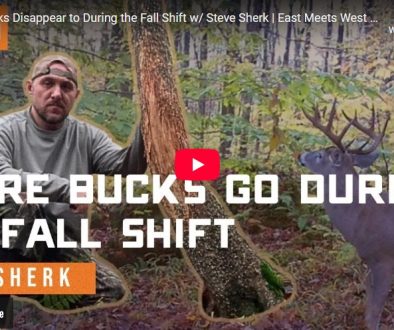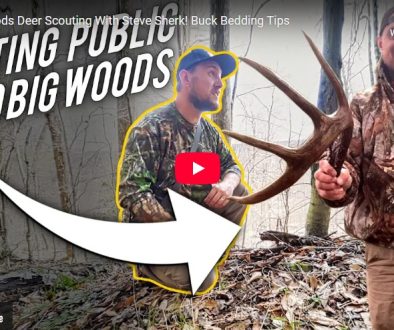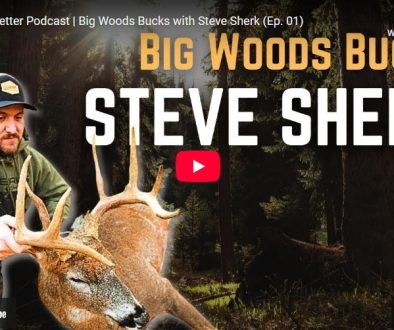How one of Pennsylvania’s most respected public land hunters finds big bucks in the Big Woods
Public land deer hunting in the vast Big Woods of Pennsylvania isn’t easy. For most hunters, chasing mature whitetails on heavily pressured land is more guesswork than science. But for Steve Sherk of Sherk’s Guide Service, it’s a discipline built on years of boots-on-the-ground scouting, smart use of trail cameras, and an unmatched ability to identify rut patterns.
In his recent video appearance, Steve Sherk’s Method of Predicting a Buck’s RUT AREA, Steve pulls back the curtain on the techniques that allow him to consistently put clients—and himself—within reach of mature bucks during the rut.
The Core of Steve’s Method
Steve explains that predicting where a buck will spend his rut time isn’t about random luck—it’s about understanding patterns, terrain, and doe concentrations.
Key principles he shares include:
- Doe Bedding Drives Buck Movement
During the rut, bucks gravitate toward where the does are. Instead of chasing rub lines or random sign, Steve focuses on identifying established doe bedding areas. - Trail Camera Clusters Over Time
Steve doesn’t rely on one or two cameras. By clustering cameras around suspected rut zones, he builds a larger picture of how deer are using the terrain year after year. - Topography and Cover
In the steep and rolling terrain of Pennsylvania, bucks seek areas that provide both cover and visibility. Ridges, benches, and cuts with just enough browse nearby can become rut hot-spots. - Historical Data Matters
Mature bucks often return to the same rutting areas annually. Even if a giant disappears during summer or early fall, Steve’s long-term data tells him when and where those deer reappear once does come into heat.
Why It Works in the Big Woods
The sheer size of Pennsylvania’s public land means hunters can’t cover everything. Steve’s method narrows down the overwhelming landscape into “high-odds zones.” By layering doe bedding, camera intel, and terrain knowledge, he predicts where rut activity will peak.
Instead of hunting where a buck was last seen, Steve sets up where bucks are most likely to show up when it matters most—when they’re vulnerable and on their feet during daylight in November.
Actionable Tips for Your Hunt
Even if you don’t have 200 cameras or decades of data, you can apply Steve’s principles on your own hunts:
- Scout for consistent doe bedding areas and keep track of them each year.
- Run multiple cameras in a small area to confirm activity.
- Pay attention to terrain funnels—benches, saddles, and clearcut edges.
- Keep notes on historical rut sightings—patterns often repeat.
- Be patient—bucks may shift into rut areas later than expected.
About Steve Sherk & Sherk’s Guide Service
Steve Sherk is a highly regarded Pennsylvania deer hunter and guide who specializes in public land hunts in the Allegheny Big Woods. His reputation is built on decades of scouting, innovative trail camera strategies, and consistently helping hunters find success in some of the toughest deer country in the East.
👉 Learn more or book a hunt with Steve at Sherk’s Guide Service.




